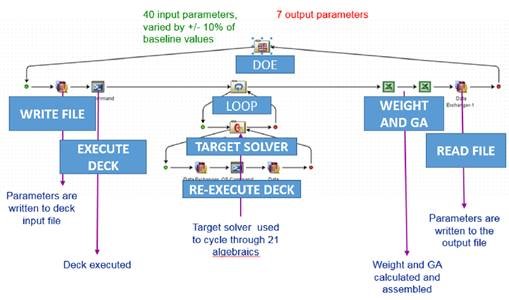European Project Clean Sky: Developing advanced Engine Multi-disciplinary Optimization Simulations (DEMOS)
Years: 2016-2019
Partners:
Empresarios Agrupados Internacional S.A. (ES)
Cranfield University (UK)
National Technical University of Athens (GR)
Airbus SAS (FR)
Presentation:
The “Innovative Aircraft Architecture” technology stream of the Clean Sky 2 Airframe ITD focuses on advanced power-plant solutions (such as CROR and UHBR) that are able to deliver a significant gain in aircraft performance.
Project DEMOS will develop advanced predictive modelling and simulation capabilities for engine design space exploration and performance optimisation of such novel propulsion systems.
The overall and detailed objectives of Project DEMOS may be summed up as follows:
- Assess, adapt and further develop a set of reliable and robust models to simulate/optimise performance of UHBR propulsion system architectures
- Identify, build and integrate simulation models of specific (novel) components which may be considered as enablers of the technology
- Demonstrate and assess the effect and influence of these components on the propulsion system performance in terms of overall performance, increase in mass, effect on lifing characteristics of the propulsion system and on the operating/ maintenance cost
- Develop a modular approach to enable integration and further development of main modules/models for preliminary design process
- Facilitate complex integration requirements
- Improve process efficiency through the development of advanced solvers and adequate numerical methods to address complex system simulations
- Develop advanced simulation techniques to improve the monitoring of communication between integrated models, robustness and convergence
- Enable complex propulsion system performance optimisation with constraint handling capability
- Develop a suite of advanced solvers to enable extended transient capabilities and simulation of complex systems transients and control
The project will build on the established multi-disciplinary concept design tools and further develop and adapt them in terms of applicability to advanced technologies and multi-objective concept analysis and selection.
Documents:
Simulation Flow in iSight for UBGF Optimization studies at Aircraft Mission Level

UBGF Engine Model Connected to the Controller

Operating line on HP Compressor for a Sudden Acceleration at SLS from 10% to 95% of max thrust in 4s

UBGF PROOSIS Schematic Diagram with Variable Pitch Fan (VPF), Variable Area Nozzle (VAN) and Gearbox (GBX) components

Sample iSight setup of a MPD arrangement

GOR PROOSIS Schematic Diagram with Contra-Rotating Propellers, Differential Planetary Gearbox and Gearbox Cooling System

Exporting of PROOSIS engine model using the FMI standard for co-simulation
